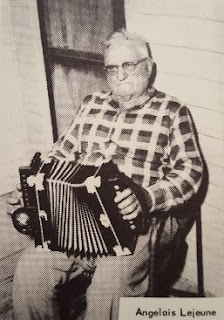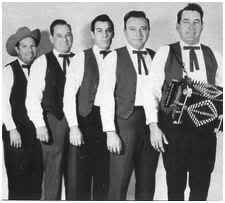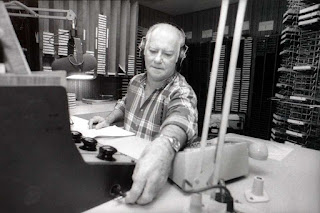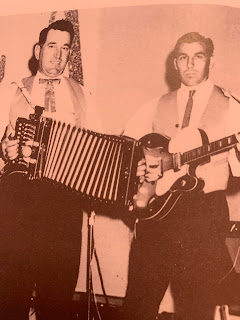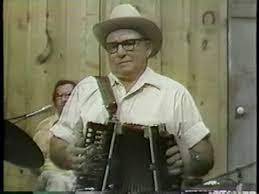One artist that has kept Cajun Music researchers confused was an accordion player named Theotis "Tee" Denise. Almost nothing has been known of him except of two 45's released with his name on them and a vague association with Happy Fats.
 The 1960's found Leroy "Happy Fats" LeBlanc keeping busy as usual. Earlier in the late 1950's, he had to seek employment outside of music, mostly due to the influence of rock and roll. But he still kept busy performing with many of his groups such as the Southerners and the Bayou Buckaroos.
The 1960's found Leroy "Happy Fats" LeBlanc keeping busy as usual. Earlier in the late 1950's, he had to seek employment outside of music, mostly due to the influence of rock and roll. But he still kept busy performing with many of his groups such as the Southerners and the Bayou Buckaroos.
While Happy had started his recording career in 1935, in the late 1940's he was recording with J.D. Miller. He would continue recording for Miller off and on until 1976 with a variety of bands.

"We were on seven radio stations. We did country and French music, just the two of us. Happy had amateur hour on KSLO in Opelousas on Saturdays. Then we'd leave there and go to Abbeville and do the same thing at the theatre. That was for five or six years."
 JD Miller had taken a break from recording Cajun Music in the mid 1950's. He kept busy recording Blues and R&B sides for labels such as Excello. In 1960, he would sign Nathan Abshire to his label along with Aldus Roger. With two of the biggest names in Cajun Music; he was back in business.
JD Miller had taken a break from recording Cajun Music in the mid 1950's. He kept busy recording Blues and R&B sides for labels such as Excello. In 1960, he would sign Nathan Abshire to his label along with Aldus Roger. With two of the biggest names in Cajun Music; he was back in business.
Happy returned to recording for Miller in the late 1960's. Miller at this time had his Kajun and Cajun Classics labels and was recording a variety of different artists such as Floyd LeBlanc, Aldus and Nathan. Happy would return with new Cajun sides as well, along with a new band including a accordion player named Tee Denise.
 But the history between Happy and Tee Denise went back to the 1940's. It was then that Tee Denise started on radio with Happy at the Old Dixie Theatre in Abbeville. During the years, Tee had his own band and also was a professional painter and a club operator. He would join Happy and his Bayou Buckaroos along with Joe Turner for a recording session at JD Miller's.
But the history between Happy and Tee Denise went back to the 1940's. It was then that Tee Denise started on radio with Happy at the Old Dixie Theatre in Abbeville. During the years, Tee had his own band and also was a professional painter and a club operator. He would join Happy and his Bayou Buckaroos along with Joe Turner for a recording session at JD Miller's.
"The Carencro Waltz" was recorded at Modern Sound Studio in Crowley in the late 1960's. Along with Happy on guitar and Tee Denise on accordion, the track features Joe Turner on vocals. Sadly the other members of the band are unknown.
 As for recording, Happy was winding down. He would record two more records for Miller and then made two with Floyd Soileau's Swallow label. Tee Denise would continue playing music, sometimes with Happy and his band. He would own and operate The Famous Blue Moon on Hopkins Street in New Iberia with great crowds on the weekends.
As for recording, Happy was winding down. He would record two more records for Miller and then made two with Floyd Soileau's Swallow label. Tee Denise would continue playing music, sometimes with Happy and his band. He would own and operate The Famous Blue Moon on Hopkins Street in New Iberia with great crowds on the weekends.
Session info:
WITH TEE DENISE AND THE BAYOU BUCK-A-ROOS
V/g or b with Theotis Denise (?), fdl, st-g, g, b, Joe Turner (v-1)
Modern Sound Studio, Crowley LA: late 1960s
JH 442 Bayou Buck-a-Roos special (inst) Cajun Classics 2014
JH 443 The Carencro waltz-1 Cajun Classics 2014
Resources:
John Broven- South To Louisiana
Wade Falcon- Early Cajun Music Blog
Ann Savoy- Cajun Music Volume II
Thanks to Wade Falcon on Tee Denise info and pics.














